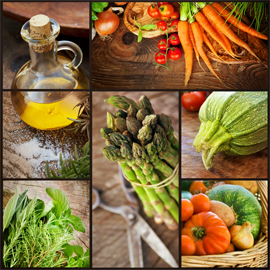Maintaining Nutrition after LAP-BAND Surgery
Posted: Sep 24 in Post-Bariatric Diet by Staff
 After LAP-BAND surgery, you will need to eat in a way that helps you take in enough essential nutrients to remain healthy despite your limited stomach capacity.
After LAP-BAND surgery, you will need to eat in a way that helps you take in enough essential nutrients to remain healthy despite your limited stomach capacity.
Following the guidelines of your post-surgical diet will help you avoid malnutrition and achieve the best results from LAP-BAND surgery. By permanently adjusting your eating habits to accommodate your needs, you can maintain a well-balanced, nutrient-rich diet.
Though your nutritional needs and eating habits will change gradually during your post-surgical recovery, maintaining long-term nutrition after LAP-BAND surgery will generally require you to:
- Focus on protein-rich foods and nutrient-rich produce
- Eat multiple small meals throughout the day
- Avoid drinking while eating
- Take nutritional supplements daily
Eating Habits for Better Nutrition
When deciding what to eat, you will need to prioritize foods to ensure that you get the nutrition you need before the space in your stomach pouch is full. It is especially important that you eat a minimum of 60 grams of protein each day.
To reach your nutrition goals, you will need to:
Eat a high-protein food with every meal.
Protein will be crucial for helping you heal and retain lean muscle mass as you lose fat. Be sure to include a high-protein source like meat, eggs or dairy every time you eat.
Use protein supplements.
Though you should try to get as much protein as possible from food sources, it can be difficult to obtain 60 grams of protein from your diet alone, especially just after surgery. To make sure you get enough, you can take low-sugar whey protein supplements with 20 grams of protein and 120 calories or less. However, it’s important to remember that taking more supplements than you need can slow down weight loss by adding unnecessary calories to your diet.
Choose low-fat dairy.
Dairy products provide your body with protein, calcium and other essential vitamins and minerals. But because dairy can contain high levels of fat and calories, it is important to select low-fat dairy products and eat them only in moderation.
After the second stage of your transitional diet after LAP-BAND surgery, it is recommended that you consume two cups of skim or 1% milk per day. If you are unable to tolerate dairy, try soy or Lactaid milk instead. If these options do not work for you, it may be necessary to consume an additional 16 grams of protein through protein supplements.
Eat protein and produce first.
Because it is the most vitally important nutrient after weight loss surgery, you will need to eat protein first. If you eat other foods first, your stomach pouch may fill up before you have the chance to eat enough protein. To get other essential nutrients, you will need to eat a variety of fruits, vegetables and whole grains after you have eaten protein.
To ensure that you have room for protein and other nutrients, always eat in this order:
- Protein
- Non-starchy fruits and vegetables
- Starchy fruits and vegetables
- Flour-based starch foods (lowest priority)
Avoid sweets, fried foods and high-calorie beverages.
These foods have little nutritional value and can take up room needed for more nutritious foods. They will need to be avoided indefinitely after LAP-BAND surgery. If desired, you can drink four to eight ounces of fruit juice or Gatorade each day, but it is best to dilute these beverages by mixing them with equal parts water.
Eat three to five small meals each day.
Eating too much or too quickly may overfill your pouch and lead to vomiting. To keep from overfilling your pouch and ensure that your body is receiving the nutrients it needs, eat one to two ounce meals three to five times daily. Eat slowly and chew every bite thoroughly.
Wait before and after eating to drink.
If you drink while you eat, fluids can take up room in your stomach pouch needed for nutrient-rich food. Instead, wait 15 to 30 minutes before and 30 to 60 minutes after meals to drink fluids. Carrying a water bottle and taking small sips can help you reach your daily fluid goal of 64 ounces.
Use chewable vitamins.
To optimize your nutritional health, you will need to take one multivitamin or mineral supplement with iron before surgery and two chewable multivitamins (Flintstones chewable or equivalent) with iron after surgery. It may also be helpful to take calcium supplements, but you should not take more than 500 mg twice a day.
By remembering these important guidelines, you can keep your body healthy and your weight loss on track by following a completely nutritious diet.

im gluten intolerant and supplement my protein with eas protien/carb control box shakes – at 110 calories a box, it packs 19 grams of protein into one shake. is this ok? and im drinking about 32 oz of low cal gatorade after i swim – will need to talk to a dietician about what to do…